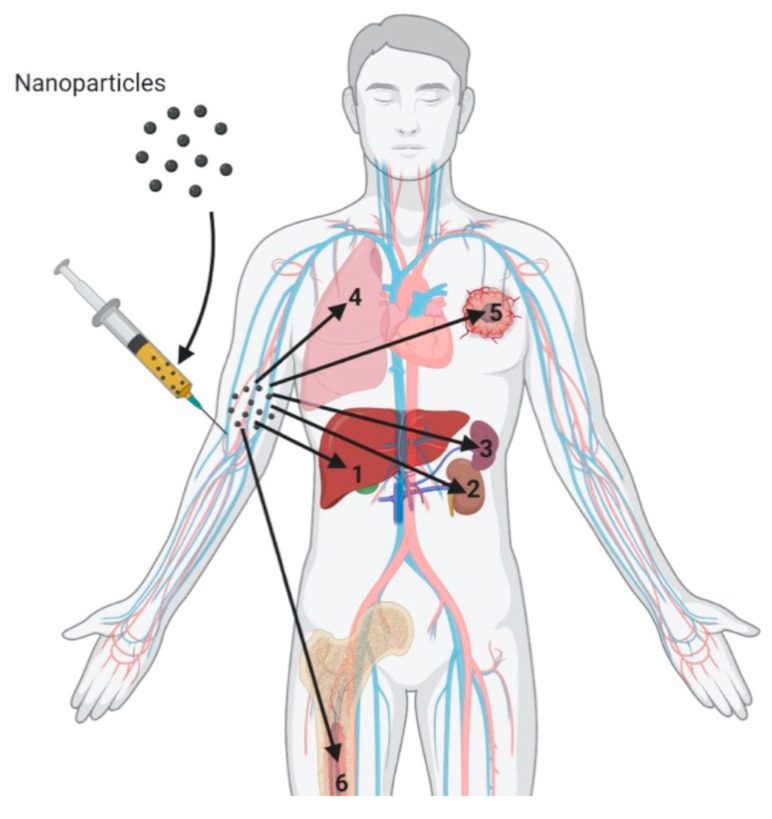Figure 1.
Physiological barriers for nanocarrier delivery following systemic administration. 1. Nanocarriers predominately accumulate in liver due to their size and velocity of blood flow. Nanoparticle accumulation in liver and rapid clearance is mainly governed by liver Kupffer cells that form the mononuclear phagocytic system (MPS) [8]. 2. Renal clearance is due to their small particle size (less than 8 nm). Larger nanocarriers are redirected for hepatic clearance [8]. 3. Spleen is the other organ that constitutes MPS and causes accumulation as well as nanocarrier clearance [8]. 4. The presence of a thick mucosal layer in the lungs acts as a barrier for targeted pulmonary delivery. Macrophages in the lungs also contribute to the accumulation and clearance of nanoparticles. 5. Nanocarriers of small particle sizes (<200 nm) target the tumors due to enhanced permeability and retention (EPR) effect caused by leaky vasculature [9]. 6. Macrophages that reside in bone marrow are also a part of the MPS system, leading to nanocarrier accumulation and clearance [8].

